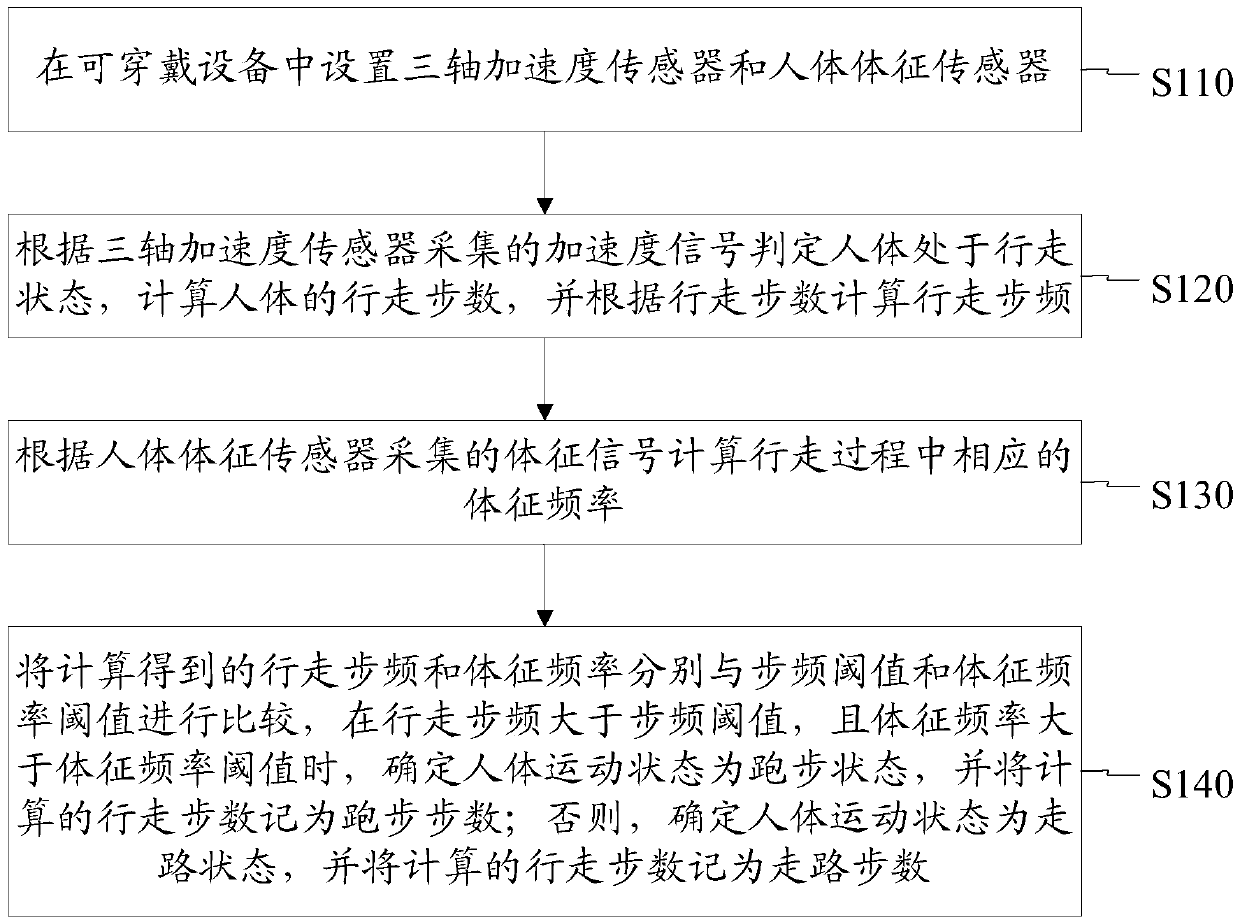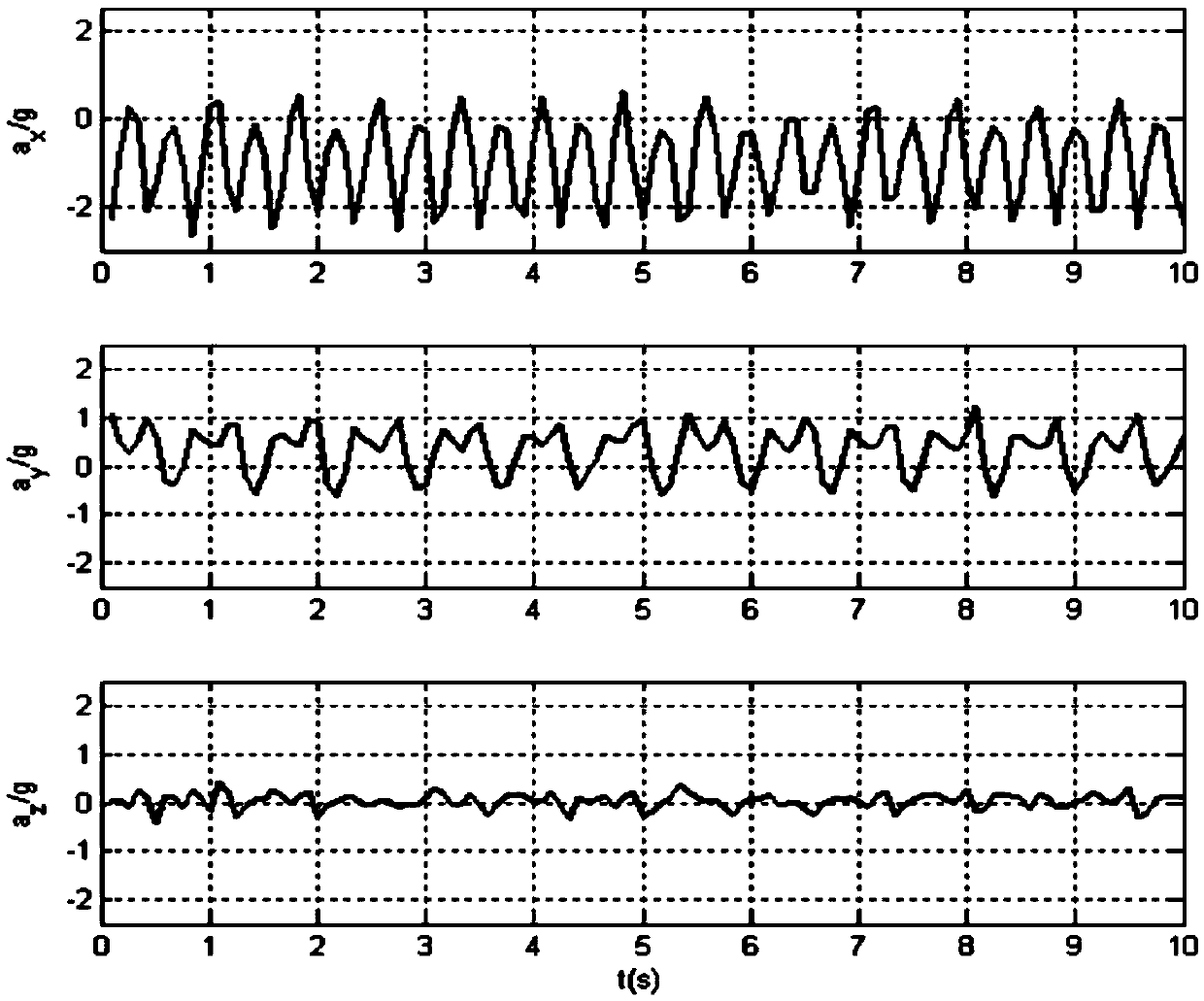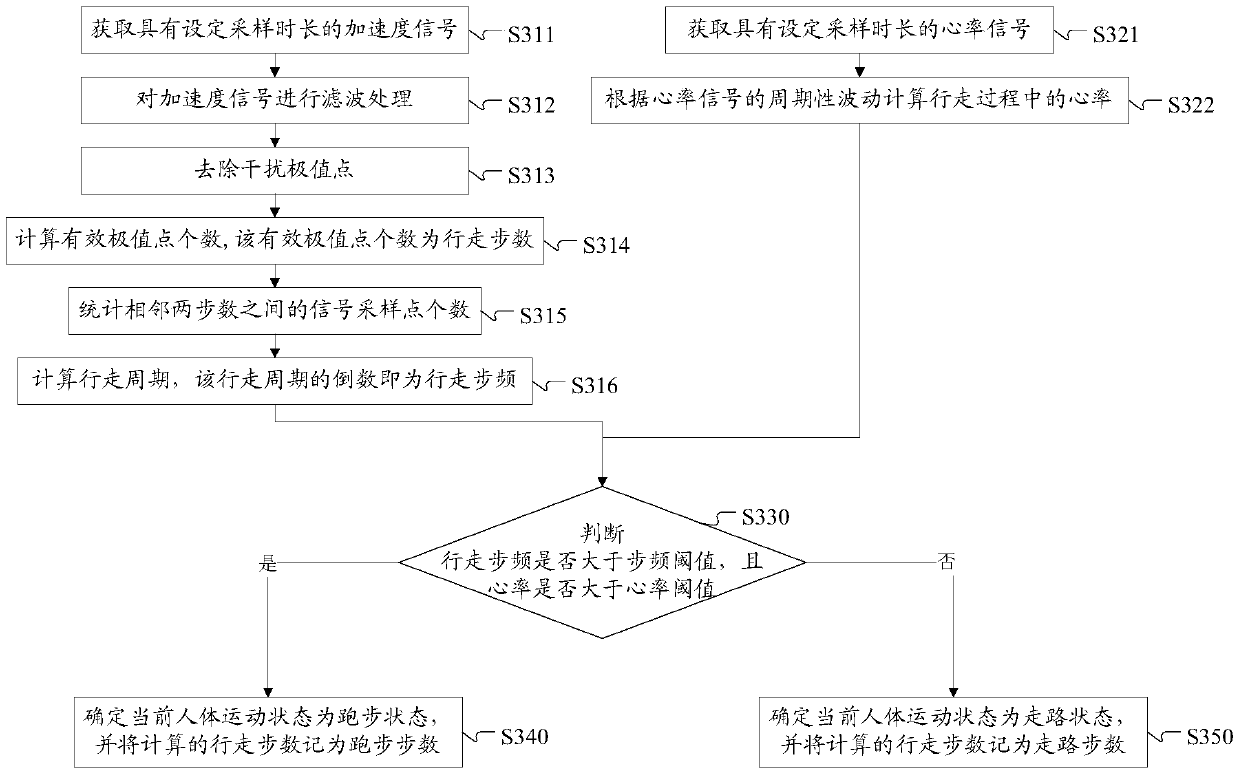Human motion state recognition method and device
A technology of human body movement and state, applied in the direction of measuring devices, measuring distances, instruments, etc., can solve problems such as equipment detachment, motionlessness, false sleep, etc., and achieve the effect of improving accuracy
- Summary
- Abstract
- Description
- Claims
- Application Information
AI Technical Summary
Benefits of technology
Problems solved by technology
Method used
Image
Examples
Embodiment 1
[0038] In this embodiment, multiple sensors are combined with human body characteristics (such as heart rate detection) to achieve the effect of more accurately obtaining the walking and running state of the human body.
[0039] Because different walking states have different stride frequency and physical signs, this embodiment uses wearable devices with acceleration sensors and physical signs sensors to monitor the movement of the human body in real time, and identify the walking state of the human body in combination with motion characteristics and biological characteristics. The walking state in this embodiment includes a walking state and a running state, and the number of walking steps includes the number of walking steps and the number of running steps.
[0040] figure 1 The flow chart of the identification method for the human body motion state provided in this embodiment, as figure 1 as shown, figure 1 The methods in include:
[0041] S110, setting a triaxial accele...
Embodiment 2
[0080] In this embodiment, multiple sensors are combined with human body characteristics (such as heart rate detection) to achieve a more accurate distinction between the sleeping state and the waking state of the human body.
[0081] In this embodiment, the sleep state is divided into light sleep state and deep sleep state. Because different degrees of sleep state correspond to different motion energies, and when the wearable device is placed at rest and when the wearable device is worn by the human body and enters the sleep state, the output of the human body sign sensor Human body signs are not the same. Therefore, this embodiment uses a wearable device with an acceleration sensor and a human body sign sensor to identify the sleep state of the human body in combination with motion characteristics and human body signs.
[0082] Figure 4 The flow chart of the identification method for the human body motion state provided in this embodiment, as Figure 4 as shown, Figure ...
Embodiment 3
[0148] Based on the same technical concept as that of Embodiment 1, this embodiment provides a device for identifying human motion states.
[0149] Figure 7 The schematic diagram of the identification device for the human body motion state provided in this embodiment, as Figure 7 as shown, Figure 7 The identification devices in include:
[0150] The walking pace calculation unit 71 is used to calculate the number of walking steps of the human body according to the acceleration signal collected by the triaxial acceleration sensor when judging that the human body is in a walking state according to the acceleration signal collected by the triaxial acceleration sensor of the wearable device, and according to the The number of walking steps calculates the walking pace.
[0151] The sign frequency calculation unit 72 is configured to calculate the corresponding sign frequency during walking according to the sign signal collected by the human body sign sensor of the detection d...
PUM
 Login to View More
Login to View More Abstract
Description
Claims
Application Information
 Login to View More
Login to View More - R&D
- Intellectual Property
- Life Sciences
- Materials
- Tech Scout
- Unparalleled Data Quality
- Higher Quality Content
- 60% Fewer Hallucinations
Browse by: Latest US Patents, China's latest patents, Technical Efficacy Thesaurus, Application Domain, Technology Topic, Popular Technical Reports.
© 2025 PatSnap. All rights reserved.Legal|Privacy policy|Modern Slavery Act Transparency Statement|Sitemap|About US| Contact US: help@patsnap.com



